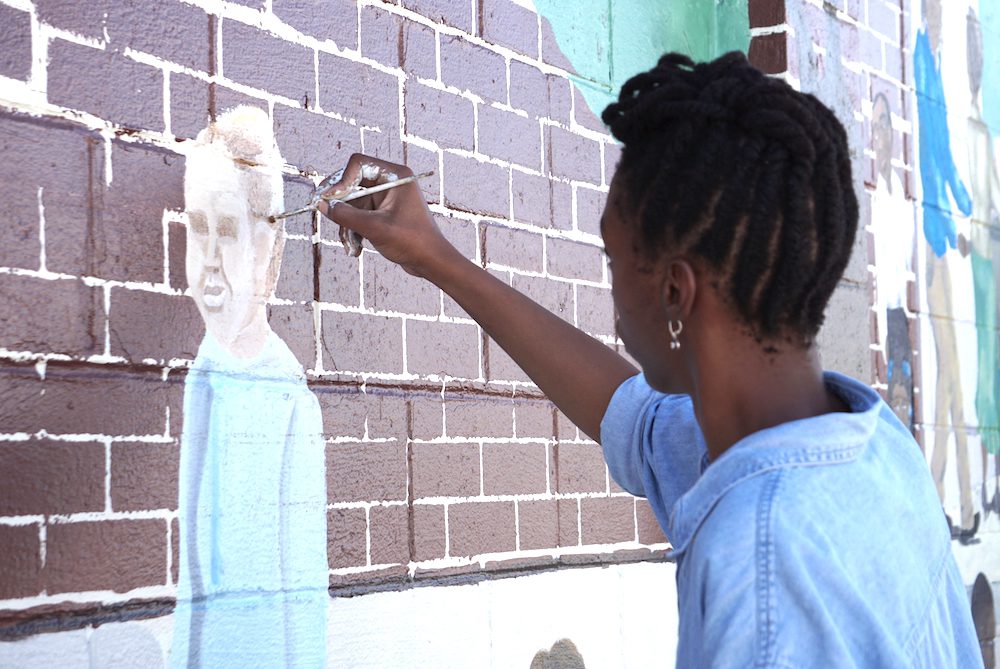As we go to press, the federal budget, including the HUD budget for fiscal year 2001, has just been released. The HUD budget, while far from what the millions of households living in unaffordable or substandard homes or on the streets need, is moving in the right direction. Its requested increase of $6 billion overall provides more money to all the major programs, including 120,000 new rental assistance vouchers.
In this issue, we provide a brief overview of the budget proposal, available in detail on HUD’s and other websites. While advocates should be happy for the increases, the budget proposal is just a first step in the long, complex political process before funds can actually be allocated. In this time of unequalled prosperity for so many Americans, and so much rhetoric about “compassion” and reaching “those left out,” the next few months on Capitol Hill should prove interesting. We’ll let you know how it turns out.
Should Arts Be CRA-Eligible?
Decades ago, community-based development organizations (CBDOs) were charged with the task of creating comprehensive change to revitalize neighborhoods. For many reasons, housing became the primary activity of most CBDOs. Some also took on the challenge of economic development. A few incorporated organizing. Today, many CBDOs are incorporating arts as a community building strategy. Some see the benefits in economic terms; for others it is an opportunity to change perceptions of their neighborhoods. For many, however, the arts are a key force binding a community, strengthening the civil society by providing a venue to share experience, culture, and values. The arts can also provide an alternative outlet for the energy and creativity of young people, and a haven for the elderly.
Without a doubt, arts are an important component of community building. Donald Kelly looks at a number of arts activities that serve such proposes. But should they be, as Kelly argues, a CRA-eligible investment? We’d like to know what you think.
Let’s Steal
As we work to help people climb up from the lower rungs of the economic ladder, others, it seems, are working just as hard to keep them there. In their article on predatory lending, Jeanette Bradley and Peter Skillern illustrate how one low-income homeowner lost $21,000 of equity in her home and, ultimately, will lose about $60,000 during the life of the loan. Through completely legal actions, what she thought would be a $6,000 home improvement loan became a mortgage refinance at a higher rate than her original mortgage and with many additional fees; including $10,000 for life insurance that should have cost $3,000 and was not necessary in any case.
Such “predatory” subprime lending is common in most states. Only North Carolina has enacted legislation to limit predatory lending. Similar bills are working their way through legislatures in a handful of other states, and the National Community Reinvestment Coalition is working to develop model legislation to limit this practice.
If you’re working hard to eliminate poverty – especially if the community in which you live or work has many older homes in need of repair – join the advocates’ fight on this issue.
Housing the Elderly
“Millions of elderly households continue to live in housing that costs too much, is in substandard condition, or fails to accommodate their physical capabilities or assistance needs,” reports HUD in Housing Our Elders. Using a range of demographic data, the report paints a picture of older Americans’ housing needs and introduces HUD’s new Housing Security Plan for Older Americans. In this issue, Stephen Golant reports on a Florida project that similarly identified the housing and service needs of elderly tenants in subsidized housing and recommends models affordable housing providers should consider to meet those needs.
Many of us have long neglected this fast growing segment of the population – the low-income and poor elderly. With this article, we will begin to take a closer look at the problem and search for innovative solutions.
Scratching the Surface
A recent report from the President’s Council on Economic Advisors tells us some good news: for the first time in decades, the income of those in the bottom fifth of the earnings scale has risen in real terms during the late 1990s. But before we celebrate too much, the Center on Budget and Policy Priorities and even the President’s Council point out that income disparity between the top and bottom is higher than ever.
Only two national programs directly affect this shameful situation: the minimum wage and the Earned Income Tax Credit (EITC). As we’ve written before, the EITC is perhaps this nation’s most effective anti-poverty policy. Beyond helping those already working, it supports the efforts of those moving from welfare to work.
The EITC’s single greatest limitation is that not enough people know about and use it. As tax time approaches, we should do all we can to assure that everyone in the neighborhoods we serve has access to this program.
Help Us Celebrate
Wow, 25 years goes by fast. Next issue will be our 25th anniversary and we’d like you to help us celebrate. Whether you’ve been with us one or 25 years, we’d like to hear what you’ve got to say about the work and mission we share. Cards, letters, and donations (tax deductible) are all welcome.




Comments